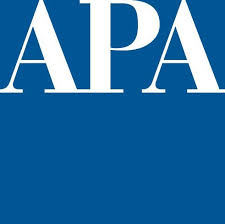American Planning Association
System Selection and Implementation | Website and Content Strategies
OVERVIEW
 The American Planning Association (APA) and its professional institute, the American Institute of Certified Planners, work to create vibrant communities where people can thrive. With offices in Washington, D.C., and Chicago, APA supports thousands of professionals dedicated to thoughtful planning.
The American Planning Association (APA) and its professional institute, the American Institute of Certified Planners, work to create vibrant communities where people can thrive. With offices in Washington, D.C., and Chicago, APA supports thousands of professionals dedicated to thoughtful planning.
The challenge
APA faced declining membership, with fewer planning graduates entering the workforce and reduced member retention. The organization’s website, last updated in 2009, lacked modern design and usability. Members and staff found it difficult to navigate the site due to cluttered pages, weak search capabilities, and limited interactivity.
APA needed a complete overhaul to align its online presence with organizational goals. Their vision included:
- Member Engagement: Attracting and retaining members through accessible resources, continuing education, and certification programs.
- Professional Development: Providing robust career tools like a job board and problem-solving resources.
- Public Advocacy: Highlighting the importance of planners and policies for stakeholders like elected officials.
- Streamlined Navigation: Creating a more intuitive and interactive user experience.
The Solution
APA engaged .orgSource in 2015 to lead the project, combining a strategic approach with an innovative association website strategy and design. Their collaborative efforts addressed project management, content strategy, and editorial needs.
- Project Management
- Defined project roles and oversight for content strategy and design.
- Facilitated the migration of data and ensured seamless content transformation.
- Collaborated with APA staff and Sandstorm Design to troubleshoot and refine implementation.
- Website Strategy
- Conducted workshops to align the website's focus with APA’s organizational goals.
- Facilitated audience research, staff surveys, and usability studies.
- Designed a responsive, mobile-friendly platform with personalized and interactive features.
- Content Strategy
- Created a comprehensive taxonomy to improve search capabilities and content discovery.
- Prioritized member-only content and tailored resources for targeted audiences.
- Developed user personas and curated knowledge resources to meet specific needs.
- Editorial Services
- Trained staff on writing for the web to maintain consistency in tone and style.
- Rewrote outdated content and created fresh, engaging copy for new sections.
The Results
On March 22, 2016, APA launched its revamped website. The updated design significantly improved the user experience and demonstrated the value of engaging with the association. Key achievements include:
- Enhanced Navigation: Simplified menu structures enable users to find critical information quickly, such as continuing education and career services.
- Improved Search Functionality: A robust taxonomy delivers fast, relevant results tailored to user needs.
- Rich Content Resources: Centralized and shareable materials, including blogs, news feeds, and planning resources, provide authoritative insights.
- Personalized Networking: The MyAPA feature allows users to build customized profiles and connect with mentors.
- Responsive Design: The website’s mobile-friendly interface ensures optimal functionality on any device while boosting SEO.
APA’s new website stands as a prime example of successful association website strategy and design, supporting the organization’s goals and enhancing member satisfaction.
Key Takeways
- Aligning website strategy with organizational objectives ensures meaningful member engagement.
- A comprehensive taxonomy boosts search relevance and streamlines navigation.
- Collaboration and research are critical to designing a user-centric digital experience.
By implementing a forward-thinking association website strategy and design, APA has transformed its online presence into a valuable resource for members, professionals, and the public.
Are You Ready to Elevate Your Association to New Heights with a Future-Ready Partner?
Contact .orgSource today to learn how they can help you unlock growth, build resilience, and achieve excellence for your organization.

